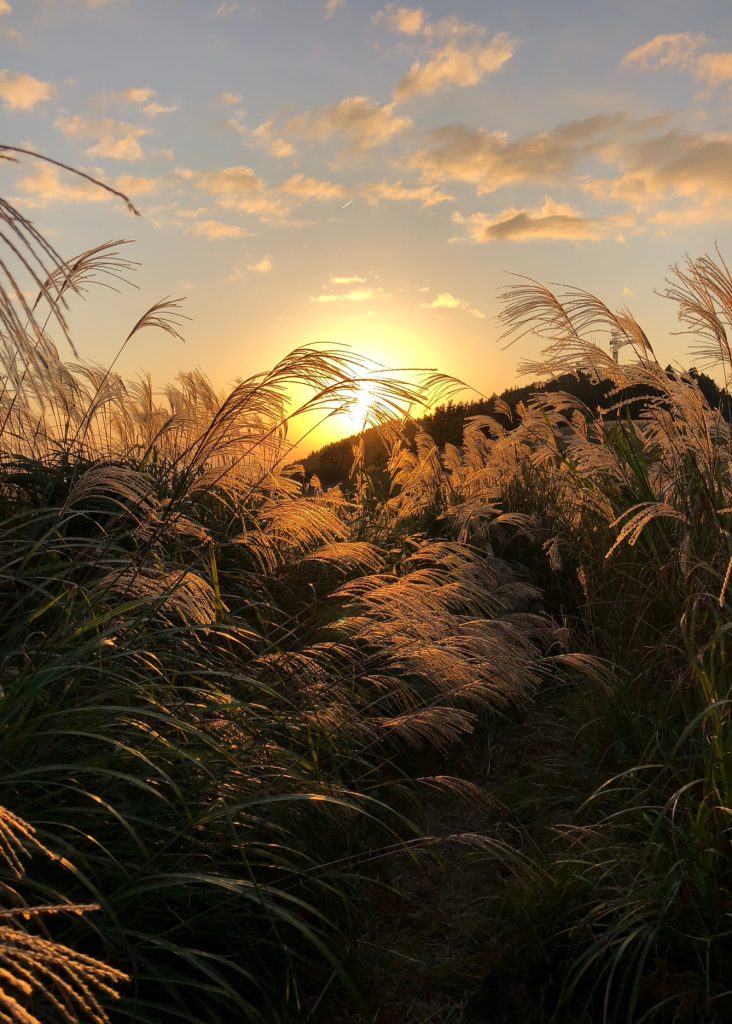
I debated whether to use ‘Kare-susuki (withered pampas grass)’ or ‘Kare-obana (withered susuki grass).’ ‘Kare-susuki’ seemed to carry a somewhat dark connotation, possibly influenced by the songs ‘Sendo Kouta’ and ‘Showa Kare-susuki.’ ‘Sendo Kouta’ became popular immediately after the 1923 Kanto earthquake, while ‘Showa Kare-susuki’ experienced a boom in 1974. I can better understand the historical context of ‘Sendo Kouta,’ which was the aftermath of the Kanto earthquake, but the background of ‘Showa Kare-susuki’ is complex and somewhat challenging to grasp. It was a time marked by the post-war economic boom, and student movements, as symbolized by the ‘Asamayama Sansou Incident,’ were waning and losing their momentum.
Today’s scenery, with susuki grass gleaming silver during the day and turning golden in the evening, inspired me to choose ‘Kare-obana.’ This scene can be found on the ‘Oishi Plateau,’ which stretches across Kishimoto Town and Aridagawa Town in Wakayama Prefecture, at an elevation of approximately 870 meters.
「枯れ尾花」にしようか「枯れススキ」にしようか迷いました。「枯れススキ」はどうも暗いイメージが付き纏います。「船頭小唄」と「和昭枯れススキ」の歌に影響されている様です。「船頭小唄」は1923年の関東大震災直後に、「和昭枯れススキ」は1974年に大流行しました。「船頭小唄」の時代背景はよく理解できますが、「和昭枯れススキ」は時代背景が複雑でちょっと理解し難いですね。戦後の高度成長が頭を打ち、学生運動も「浅間山荘事件」が象徴する様に、挫折し、下火になっていった時代です。今日の風景は、昼には銀色に、夕暮れには金色に輝くススキを歌いたかったので「枯れ尾花」としました。和歌山県の紀美野町と有田川町にまたがる「生石高原(おいしこうげん)」、標高約870mに広がるススキです。
